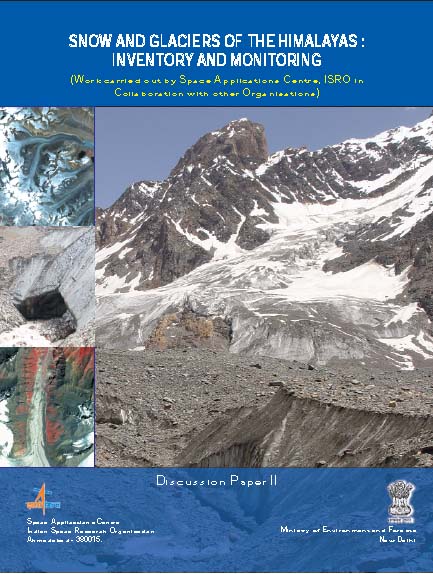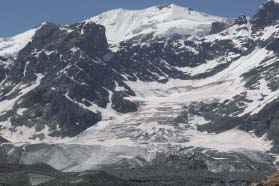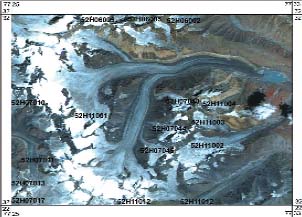 The study on “Snow and Glacier Studies” was taken up by the Space Applications Centre, Indian Space Research Organisation (ISRO) and executed in collaboration with fourteen research organizations and academic institutions of the country, at the behest of the Ministry of Environment and Forests.
The study on “Snow and Glacier Studies” was taken up by the Space Applications Centre, Indian Space Research Organisation (ISRO) and executed in collaboration with fourteen research organizations and academic institutions of the country, at the behest of the Ministry of Environment and Forests.
Himalayan mountains contain important natural resources of frozen fresh water in the form of snow and glaciers. These glaciers are unique as they are located in tropics, high altitude regions, predominantly valley type and many are covered with debris.
The great northern plains of India sustain on the perennial melt of snow and glaciers meeting the water requirements of agriculture, industries, domestic sector even in the months of summer when large tracts of the country go dry. Therefore, it is important to monitor and assess the state of snow and glaciers and to know the sustainability of glaciers in view of changing global scenarios of climate and water security of the nation. Any information pertaining to Himalayan glaciers is normally difficult to be obtained by conventional means due to its harsh weather and rugged terrains.
This source of water is not permanent as glacial dimensions change with climate. Therefore we need information that is deeply rooted in science, to understand future changes in the Himalayan snow and glacier covers and its influence on stream runoff. The inaccessible terrains and the harsh climate prevailing in the Himalayas makes the task of data collection extremely difficult, therefore, space based monitoring of these resources has been found to be an extremely viable and useful alternative.

Snow and Glacier, Himalayas
As per the inventory developed under the study there are 32,392 glaciers in the Indus, Ganga and Brahmaputra basins draining into India. India alone, has 16,627 glaciers which covers an area of 40,563 sq. km. For the first time an inventory of such a magnitude has been accomplished using recently available satellite data. It is a task of great significance, that more than 2,500 glaciers have been monitored to estimate glacial advance and retreat. The snow line has been monitored for about one thousand Himalayan glaciers.
Himalayan glaciers in the Indian subcontinent are broadly divided into three river basins, namely, Indus, Ganga and Brahmaputra. These glaciers are important source of freshwater for northern Indian rivers and water reservoirs. For water resources planning and management in North-India, it is essential to study and monitor Himalayan glacier & snow cover. Moreover, the glaciers are important indicators of climate change.

Samudra Tapu Glacier, Chandra Sub Basin, Western Himalayas
The Space Applications Centre has developed techniques for mapping and monitoring of Himalayan glaciers using satellite data. Remote sensing based techniques, models and methods to generate a large amount of digital database and maps to understand the state of Himalayan cryosphere has now assumed greater significance when the nation needs to address a large number of questions about the health and state of glaciers. There is no contemporary technique which provides this information to the nation in a very short span of time, and for a large number of glaciers occurring in inaccessible regions.
The findings of the project presented in this document will be of interest and use to the researchers working in the field of environment, glaciology, hydrology and climate change.
Download the reports below -